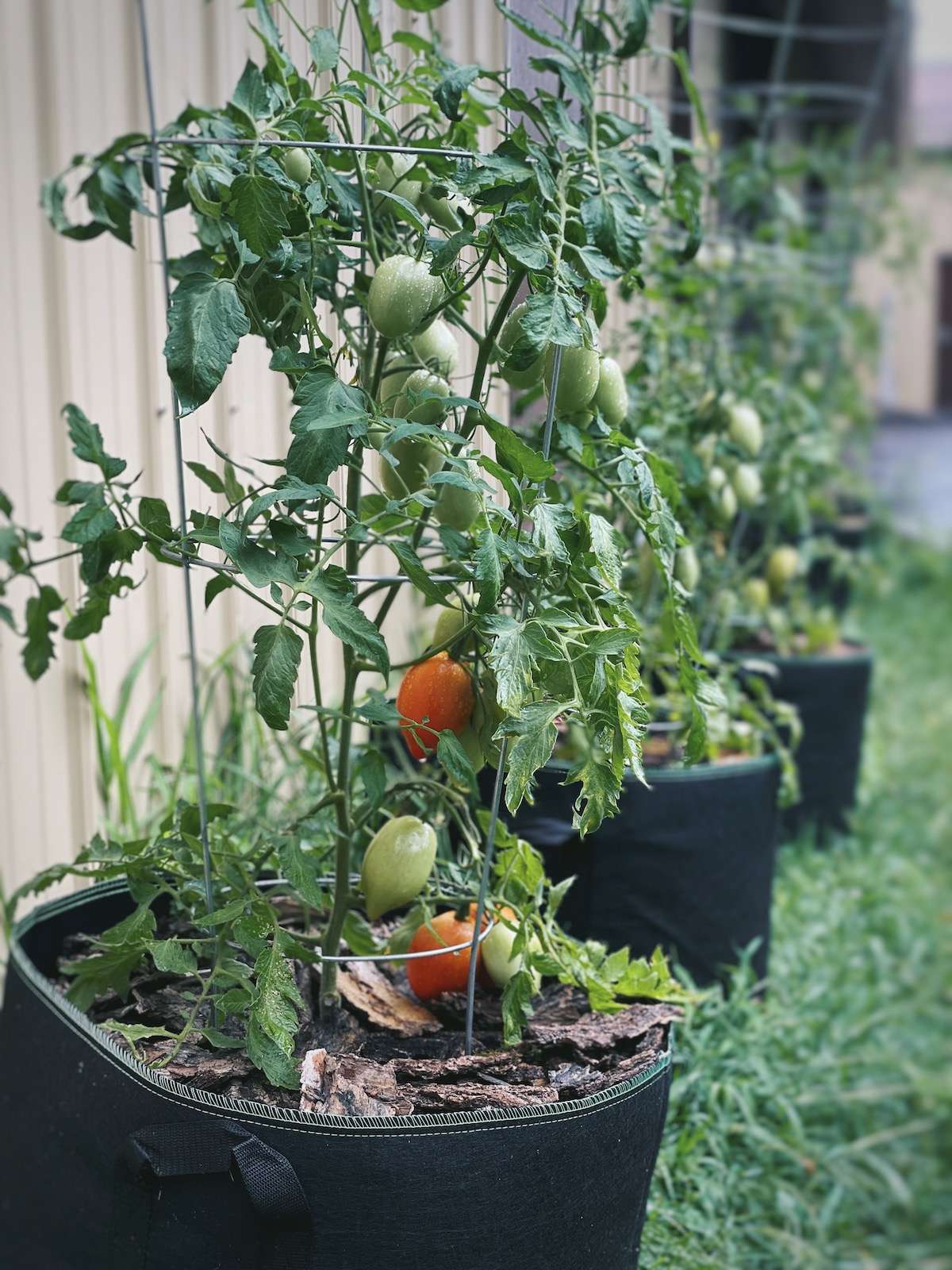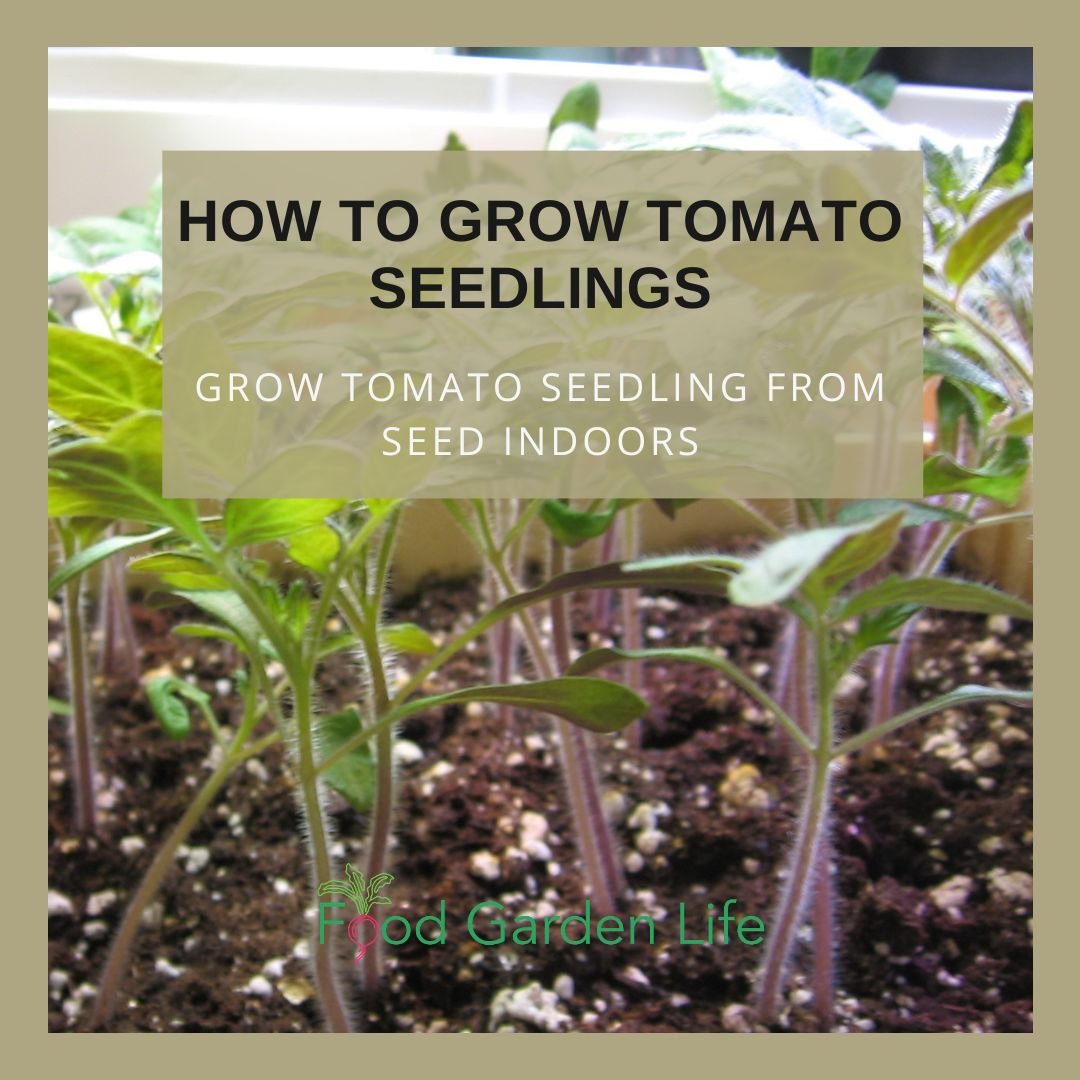To care for tomato seedlings, provide ample sunlight and keep the soil consistently moist. Ensure proper spacing to prevent crowding and enhance airflow.
Tomato seedlings require meticulous attention for healthy growth. Start by placing them in a location with abundant sunlight, ideally 6-8 hours daily. Consistent moisture is crucial, so water the seedlings regularly, ensuring the soil remains damp but not waterlogged. Proper spacing between seedlings helps prevent diseases and promotes robust growth.
Use a balanced fertilizer to nourish the young plants, and consider staking them to support their development. Monitor for pests and diseases, treating any issues promptly. With these care tips, your tomato seedlings will thrive and eventually produce a bountiful harvest.

Credit: gardenerspath.com
Choosing The Right Seeds
Choosing the right seeds is the first step in caring for tomato seedlings. The type of seeds you choose can affect growth and yield. Let’s explore the differences between heirloom and hybrid seeds, and understand seed quality.
Heirloom Vs. Hybrid
Heirloom seeds are traditional varieties passed down through generations. They are open-pollinated, which means they can produce seeds that are true to the parent plant. Heirloom tomatoes often have unique flavors and colors.
Hybrid seeds are created by cross-pollinating two different plants. This process combines the best traits of both parents. Hybrids are often more disease-resistant and can have higher yields. However, they do not produce seeds that are true to type.
| Feature | Heirloom | Hybrid |
|---|---|---|
| Pollination | Open-pollinated | Cross-pollinated |
| Seed Viability | True to type | Not true to type |
| Flavor | Unique | Varied |
| Disease Resistance | Varied | High |
Seed Quality
Seed quality is crucial for healthy tomato seedlings. Always choose seeds from a reputable source. Look for seeds with high germination rates. This ensures more seeds will sprout.
- Check the expiration date on the seed packet.
- Ensure seeds are stored in a cool, dry place.
- Avoid seeds that are damaged or discolored.
For best results, use fresh seeds. Older seeds may have lower germination rates. By choosing quality seeds, you give your tomato seedlings a strong start.
Preparing The Soil
Proper soil preparation is crucial for healthy tomato seedlings. The right soil mix ensures good drainage and nutrient availability. Let’s look at how to prepare the soil for your tomato plants.
Soil Composition
The soil should be a mix of several components. A good soil mix includes:
- 40% garden soil
- 30% compost
- 20% peat moss
- 10% perlite
Garden soil provides basic nutrients. Compost adds organic matter. Peat moss helps retain moisture. Perlite improves drainage.
Nutrient Requirements
Tomato seedlings need a balanced nutrient supply. Essential nutrients include:
| Nutrient | Purpose |
|---|---|
| Nitrogen (N) | Promotes leafy growth |
| Phosphorus (P) | Encourages root development |
| Potassium (K) | Aids overall plant health |
Use a balanced fertilizer with an N-P-K ratio of 10-10-10. Apply it according to the package instructions.
Planting Techniques
Tomato seedlings need the right planting techniques. Proper planting ensures healthy growth. Let’s explore the key aspects of planting techniques.
Seed Depth
Proper seed depth is crucial for tomato seedlings. Plant the seeds 1/4 inch deep. This helps the seeds germinate efficiently. Ensure the soil is moist but not soggy.
Spacing
Correct spacing is vital for tomato seedlings. Space the seedlings 18 to 24 inches apart. This allows enough room for growth. Crowded plants may not grow well.
| Technique | Details |
|---|---|
| Seed Depth | 1/4 inch deep |
| Spacing | 18 to 24 inches apart |
Follow these planting techniques for healthy tomato seedlings. Proper care leads to a bountiful harvest.

Credit: thehomesteadingrd.com
Watering Guidelines
Caring for tomato seedlings is essential for healthy growth. Proper watering ensures strong roots and vibrant plants. Let’s explore the best practices for watering your tomato seedlings.
Frequency
Tomato seedlings need consistent watering. Water them daily in the morning. Use your finger to check soil moisture. If the top inch is dry, it’s time to water.
Best Practices
- Use room temperature water: Cold water can shock the roots.
- Water at the base: Avoid getting the leaves wet to prevent disease.
- Ensure drainage: Make sure pots have holes for excess water to escape.
- Water deeply: Encourage roots to grow deeper by soaking the soil.
- Avoid overwatering: Too much water can cause root rot.
| Time | Action |
|---|---|
| Morning | Water seedlings |
| Afternoon | Check soil moisture |
Remember, consistent and proper watering ensures healthy tomato seedlings. Follow these guidelines for the best results.
Light Requirements
Caring for tomato seedlings involves meeting their light requirements. Proper lighting ensures healthy growth and strong stems. This section covers both natural and artificial light needs for tomato seedlings.
Natural Light
Tomato seedlings need 6-8 hours of sunlight daily. Place them near a south-facing window for maximum exposure. Rotate the seedlings every few days. This prevents them from leaning towards the light source. Use sheer curtains to diffuse intense sunlight. This protects the seedlings from getting scorched.
Artificial Light
If natural light is insufficient, use grow lights. Position fluorescent lights 2-3 inches above the seedlings. Adjust the height as they grow. LED grow lights are also effective. They provide the necessary spectrum for growth. Keep the lights on for 14-16 hours daily. Use a timer for consistency.
| Light Source | Duration | Distance |
|---|---|---|
| Natural Light | 6-8 hours | Near south-facing window |
| Fluorescent Lights | 14-16 hours | 2-3 inches above |
| LED Grow Lights | 14-16 hours | Adjustable |
Temperature Control
Proper temperature control is crucial for the healthy growth of tomato seedlings. Ensuring the right temperature helps seedlings to thrive and reduces the risk of diseases. Let’s explore the ideal temperature and how to manage fluctuations effectively.
Ideal Temperature
Tomato seedlings need a specific temperature range to grow well. The ideal temperature during the day is between 70°F and 75°F (21°C to 24°C). At night, it should drop slightly to 60°F to 65°F (16°C to 18°C).
Maintaining this temperature range ensures the best growth. Use a thermometer to monitor the temperature regularly. If you grow seedlings indoors, place them in a warm spot but avoid direct heat sources.
Managing Fluctuations
Temperature fluctuations can stress tomato seedlings. This may stunt their growth or make them susceptible to diseases.
Here’s how to manage temperature fluctuations:
- Use a heat mat: Place it under the seedling trays to maintain consistent warmth.
- Insulate the growing area: Use plastic covers or cloches to keep the temperature stable.
- Ventilate carefully: Open windows or use fans to prevent overheating but close them at night to retain warmth.
If you grow seedlings outdoors, protect them from sudden cold snaps. Use row covers or move them indoors temporarily.
| Day Temperature | Night Temperature |
|---|---|
| 70°F – 75°F (21°C – 24°C) | 60°F – 65°F (16°C – 18°C) |
Fertilization Tips
Caring for tomato seedlings involves several steps. One crucial step is fertilization. Proper fertilization ensures healthy growth and a bountiful harvest. Let’s explore some essential tips.
Types Of Fertilizers
Choosing the right fertilizer is key. Here are some options:
- Organic Fertilizers: These include compost and manure. They release nutrients slowly.
- Inorganic Fertilizers: These are chemical-based. They provide quick nutrient release.
- Balanced Fertilizers: These have equal parts nitrogen, phosphorus, and potassium. They support overall growth.
- Specialty Fertilizers: These are designed for specific needs. Examples include high-phosphorus or high-potassium formulas.
Application Timing
Applying fertilizer at the right time is crucial. Here is a simple schedule:
- Initial Application: Apply a balanced fertilizer during planting. Mix it into the soil.
- First Few Weeks: Use a nitrogen-rich fertilizer. This promotes leafy growth.
- Pre-Flowering Stage: Switch to a high-phosphorus fertilizer. This encourages flowering.
- Fruit Development: Use a potassium-rich fertilizer. This helps in fruit formation.
Over-fertilizing can harm seedlings. Always follow the recommended dosage.
| Stage | Fertilizer Type | Purpose |
|---|---|---|
| Planting | Balanced Fertilizer | Overall Growth |
| First Few Weeks | Nitrogen-Rich | Leafy Growth |
| Pre-Flowering | High-Phosphorus | Encourage Flowering |
| Fruit Development | Potassium-Rich | Fruit Formation |
Pest And Disease Management
Caring for tomato seedlings involves protecting them from pests and diseases. Managing pests and diseases is crucial for healthy growth. This section will guide you on common pests and preventive measures.
Common Pests
Tomato seedlings attract various pests. Below are some common ones:
- Aphids – Small, soft-bodied insects that suck sap from plants.
- Cutworms – Caterpillars that cut seedlings at the soil line.
- Spider Mites – Tiny pests that cause yellowing leaves.
- Whiteflies – Small white insects that feed on the undersides of leaves.
| Pest | Symptoms |
|---|---|
| Aphids | Sticky residue, curled leaves |
| Cutworms | Seedlings cut at the base |
| Spider Mites | Yellow spots, webbing |
| Whiteflies | Yellowing leaves, stunted growth |
Preventive Measures
Preventive measures are the first line of defense. Follow these steps:
- Inspect Regularly – Check seedlings daily for signs of pests.
- Use Barriers – Place collars around stems to stop cutworms.
- Introduce Beneficial Insects – Ladybugs and lacewings eat aphids.
- Maintain Cleanliness – Remove weeds and debris around the plants.
- Use Natural Sprays – Neem oil and insecticidal soap deter pests.
By following these guidelines, you can keep your tomato seedlings healthy and thriving. Remember, early detection and prevention are key to successful pest management.

Credit: www.foodgardenlife.com
Frequently Asked Questions
How Often Should I Water Tomato Seedlings?
Tomato seedlings need consistent moisture. Water them daily or every other day. Ensure the soil is damp but not waterlogged.
What Is The Ideal Temperature For Tomato Seedlings?
Tomato seedlings thrive at temperatures between 65-75°F (18-24°C). Avoid exposing them to frost or extreme heat.
How Much Sunlight Do Tomato Seedlings Need?
Tomato seedlings require 12-16 hours of sunlight daily. Use grow lights if natural sunlight is insufficient.
When Should I Transplant Tomato Seedlings?
Transplant tomato seedlings when they have 2-3 sets of true leaves. Ensure the risk of frost has passed.
Conclusion
Caring for tomato seedlings is simple with the right steps. Ensure they receive proper sunlight, water, and nutrients. Monitor for pests and diseases regularly. With consistent care, your tomato plants will thrive. Enjoy the process and look forward to a bountiful harvest.
Happy gardening!
